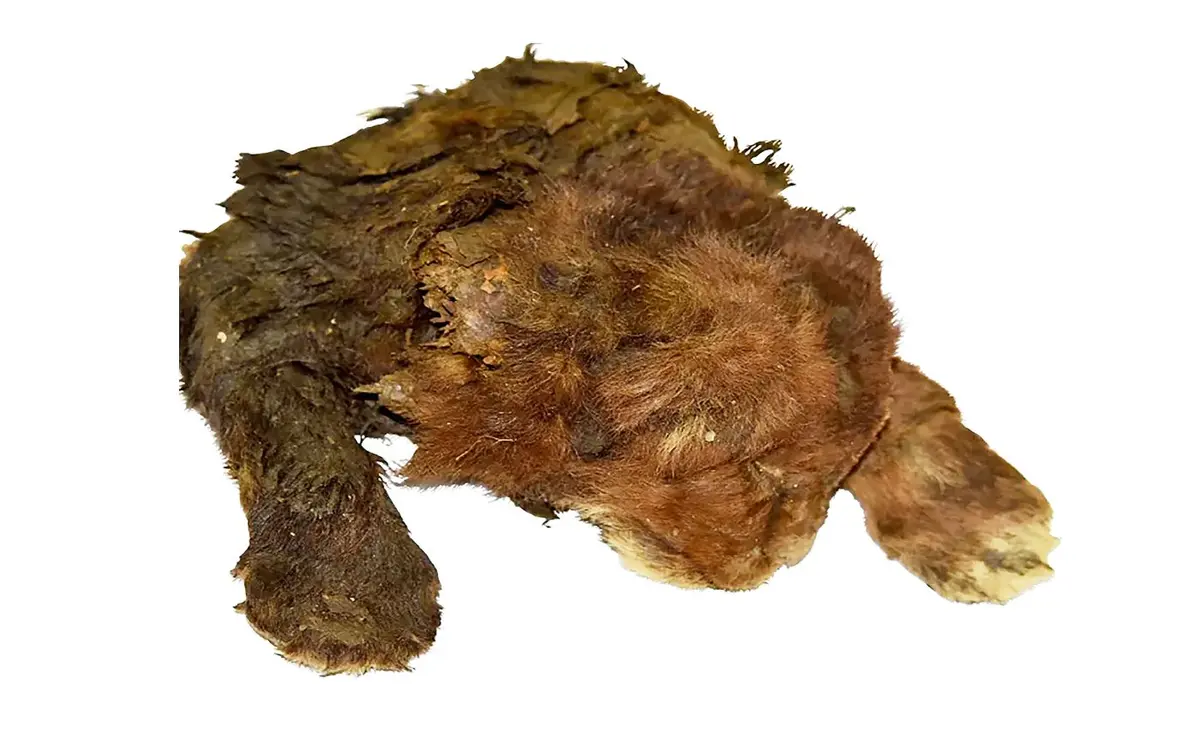The saber-toothed cat, the iconic predator of the Ice Age, continues to fascinate scientists and enthusiasts with its mysterious heritage. With its rich history etched in the layers of time, our planet serves as a vast library of ancient stories, preserving tales of magnificent creatures from every age.
Among them is a striking new episode: Scientists have found a mummified, saber-toothed kitten in Siberia. Providing an extraordinary level of preservation, this discovery provides a rare and intimate insight into the anatomy and lifestyle of this extinct predator. The research also reveals secrets frozen in time.
First recorded mummified saber-toothed cat
A Siberian Ice Age cub is the first recorded mummified saber-toothed cat; This discovery caused a wave of excitement among paleontologists around the world. This allows us to look back in time and see what saber-toothed cats looked like. The mummy provides valuable information about the cat’s musculature and how this may have affected its hunting methods.
The mummy’s face, forelimbs, torso, and lower body were fairly intact and generously covered with thick, soft fur that was 0.8 to 1.2 inches (20 to 30 millimeters) long.
Learn about an endangered species
The mummy is the first Asian reference to saber-toothed cats. Homotherium latidens. Other Ice Age mummies, such as woolly rhinos and mammoths, are quite common in the Siberian region. However, mummified cats are extremely rare.
The next steps in studying this extinct species included analysis of the extracted DNA and detailed examination of the cub’s skeleton, muscles, and hair. Paleontologist Jack Tseng, an associate professor of integrative biology at the University of California at Berkeley, who was not involved in the discovery, expressed surprise at the find.
“It is rare to find bones of this origin, let alone soft tissues associated with it,” Tseng said.
Speaking to CNN, Tseng shared that he was at a loss for words as he thought about “the wealth of knowledge that could emerge from this unique discovery.”
“I don’t know if other paleontologists are as confused as mine, but now we’ve seen it, the truth has changed.”
Hints from the past
The cub, preserved in permafrost, was discovered by local diggers in 2020 near the Badyarich River in northeastern Yakutia. According to radiocarbon dating, the cub is at least 35,000 years old, meaning it lived in the second half of the Pleistocene epoch (about 2.6 million to 11,700 years ago).
The preservation of the cub’s front legs was extraordinary; the claws and fleshy pads or “beans” (as modern cat fans call them) were still intact. The cubs of this ancient and extinct species differed significantly from modern lion cubs. The saber-toothed cub appeared to have longer front legs, a larger muzzle, a rougher neck, darker fur, and smaller ears.
The mystery of the saber-toothed cat is being solved
The cub’s forearms and paws resembled those of bears, known for their food-gathering prowess. This similarity is hometerium They may have relied on their forearms, perhaps using them to balance their prey. Until now, 3D digital modeling of scanned fossils has been used to hypothesize about the saber-toothed cat’s anatomy. But nothing compares to seeing these limbs “alive.”
This find is not just about the mummy homeotherium ; It offers a unique perspective on the entire evolutionary history of the cat group. The mummy of a saber-toothed kitten is a priceless find that provides another vivid glimpse into the fascinating history of our planet. The research article was published in the journal Scientific Reports.
Source: Port Altele
